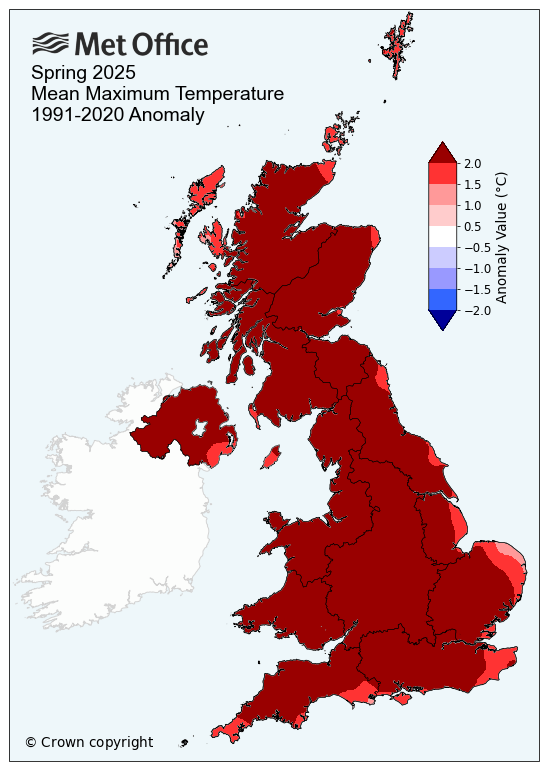UK Heatwaves: Are Record Temperatures the New Normal?
As the UK Swelters in its Third Heatwave, Experts Question: Is This Just Summer?
The United Kingdom is grappling with its third heatwave of the year, raising critical questions about the changing patterns of summer weather and the escalating impact of climate change. 2025 has already been a record-breaking year for weather, with spring recording the warmest and sunniest conditions in UK history, followed by June becoming the warmest month on record for England. As temperatures continue to soar well into July, the nation faces a stark reality: are these extreme heat events becoming the new normal?
The scientific consensus, underscored by the Intergovernmental Panel on Climate Change (IPCC), is unequivocal: human influence is undeniably warming our planet. This warming trend is not merely a statistical anomaly; it directly correlates with a dramatic increase in the frequency and intensity of extreme weather events, including prolonged and severe heatwaves.

A Summer of Extremes: 2025’s Temperature Anomaly
The data paints a clear picture of a year defined by unprecedented warmth. Spring 2025 shattered previous records for both temperature and sunshine. This trend has continued into summer, with June marking a significant milestone as the warmest month recorded in England. The current heatwave, extending into mid-July, is the third such event this year, signaling a departure from historical weather patterns.
The Met Office has provided compelling visual evidence of this warming trend. Maps illustrating temperature anomalies for Spring 2025 show vast swathes of the UK experiencing temperatures significantly above the long-term average, with deviations reaching as high as 1.4°C. This persistent warmth underscores the widespread impact of rising global temperatures.

The highest temperature recorded this year reached 35.8°C in Faversham, Kent, on July 1st. While this figure falls short of the all-time UK record of over 40°C set in July 2022, the increasing frequency of such high temperatures is a cause for concern. Climate scientists emphasize that even a seemingly small increase in average global temperature—around 1.3°C since the industrial revolution—can lead to disproportionately higher increases in extreme heat events, with some parts of the UK experiencing heatwaves that are 3-4°C warmer than they would have been without global warming.
Understanding the Drivers of Extreme Heat
The accumulation of greenhouse gases, primarily carbon dioxide, released through human activities is the fundamental driver of these rising temperatures. The Earth’s oceans play a critical role in absorbing excess heat, but their capacity to regulate climate may be strained as marine heatwaves become more prevalent globally. This complex interplay highlights the interconnectedness of Earth’s systems and the far-reaching consequences of climate change.
While natural climate phenomena like El Niño and La Niña influence global temperatures, their effect is increasingly overshadowed by anthropogenic warming. El Niño events, historically associated with record hot years, typically raise global temperatures by approximately 0.1°C. However, recent analyses suggest that the impact of human-induced climate change is so profound that even cooler La Niña phases are now associated with warmer global average temperatures than El Niño years from previous decades.

Historical Context: 1976 vs. Today
Comparisons are often drawn to the iconic summer of 1976, which featured a remarkable 16 consecutive days of heat and a June record of 35.6°C. However, while 1976 was an exceptional event, analysis indicates that June 2025 has seen higher average temperatures. Furthermore, the 1976 heatwave was relatively isolated within a cooler decade and affected a more localized area compared to the widespread, persistent heatwaves experienced today.
The Outlook: Will the Heat Persist?
While the current heatwave is expected to offer some respite early next week with cooler, more unsettled conditions, particularly in the north, warmer weather is predicted to return later in the week. Temperatures are likely to remain above average for much of July, especially in the south-east of England.
Looking ahead, climate projections from the Met Office consistently indicate that hot spells will become more frequent and intense in the UK’s future climate. Summer seasons are expected to see the most significant warming, with heatwaves becoming a more regular and defining feature of the season. While specific rainfall patterns remain less certain, a general trend towards drier conditions in the south-east and wetter conditions in the north is anticipated, with a potential return to wetter weather in September.
The ongoing pattern of record-breaking temperatures serves as a potent reminder of the urgent need to address climate change and adapt to its increasingly evident consequences.



Post Comment